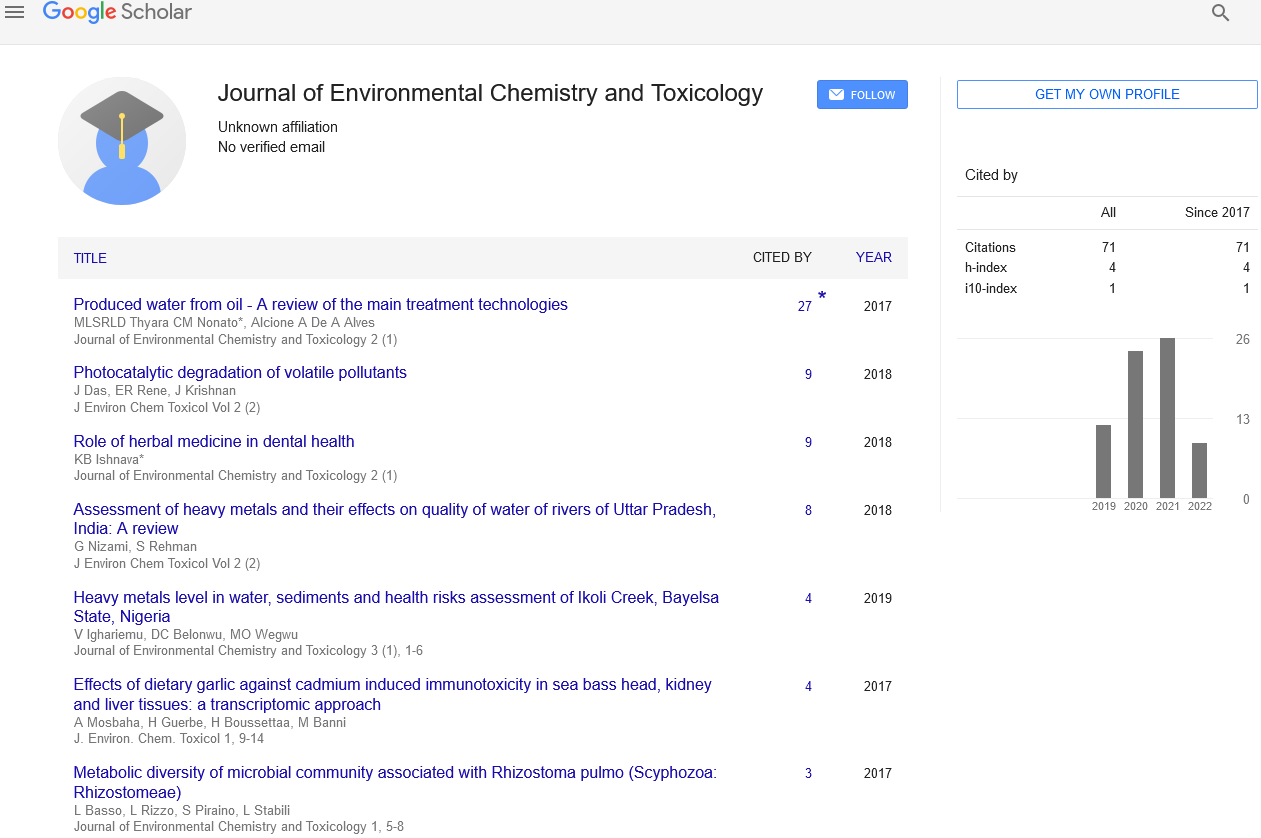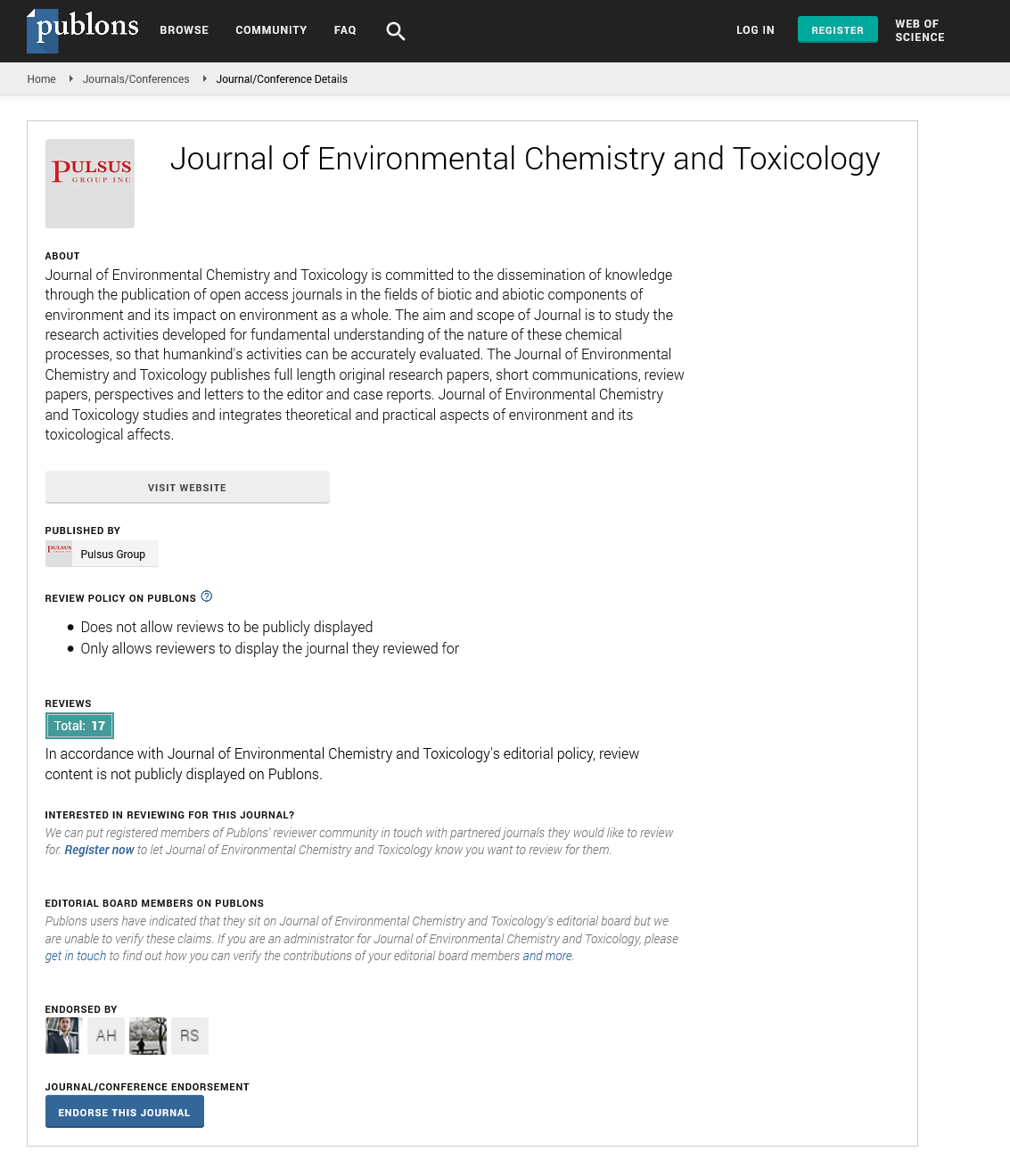Understanding studies in environmental microbiology
Received: 30-Sep-2017 Accepted Date: Oct 23, 2017; Published: 07-Nov-2017
Citation: Saadoun I. Understanding Studies in Environmental Microbiology. Journal of Environmental Microbiology. October, 2017;1(1):1.
This open-access article is distributed under the terms of the Creative Commons Attribution Non-Commercial License (CC BY-NC) (http://creativecommons.org/licenses/by-nc/4.0/), which permits reuse, distribution and reproduction of the article, provided that the original work is properly cited and the reuse is restricted to noncommercial purposes. For commercial reuse, contact reprints@pulsus.com
The area that studies interaction of microorganisms with the environment is known as environmental microbiology. It includes the structure, activities and behavior of microbial communities, microbial interactions and interactions with biotic and a biotic environmental factors, diversity in microbial structure, physiology, and activity to produce primary and secondary metabolites and to degrade pollutants, extremophiles, element cycles and biogeochemical processes [1]. As a result, environmental microbiology is a multidisciplinary field that is based on contributions from ecology, biogeochemistry, analytical chemistry, microbial physiology, evolution and (meta) genomics.
Microorganisms are abundant and ubiquitously present in nature. Estimates of approximately 109 microbes representing thousands of species exist in a gram of soil. Other microorganisms as the extremophiles prevail in harsh, unfavorable extreme environments which some can survive high temperatures, often above 100°C, and some are found in too cold habitats covering lakes, glaciers, or the polar seas, and others in highly saline, acidic, or alkaline habitats [2]. To study these diverse microbes and their habitats advanced techniques of molecular biology, bioinformatics, physiology, and geochemistry have been applied. Because of their great specificity, molecular biology and bioinformatics techniques have revolutionized the study of diversity of microorganisms in the environment and improved the understanding of the composition and the huge complexity in natural communities of microbes and their phylogeny and physiology. For example and as less than 1% of earth’s microbial population has been cultured, current research is emphasizing the application of "omics" approaches to study genomes recovered from environmental samples without first isolating members of the microbial community and growing them in pure culture, and then to identify microbes and their functions inhabiting different environments. Additionally, the application of omics technologies to biodegradation research has generated a plethora of new data providing a greater understanding of the key pathways and new insights into the adaptability of organisms to changing environmental conditions.
Because microorganisms are provided with diverse metabolic machinery, they have a profound impact on the biosphere. They are the backbone of ecosystems where, they provide energy and carbon to the other organisms in some zones, promote plant health and growth, decompose nutrients, and have a special role in biogeochemical cycles [3]. Along the understanding of these activities, scientists take advantages of indigenous microorganisms to be used as an eco-friendly solution in remediation of domestic, agricultural and industrial wastes and subsurface pollution in soils, sediments and marine environments [3]. Therefore, exploitation of the metabolic activities of microbes as application to clean the environment is a rapidly expanding field of biotech industry and business activity that worth billions of dollars in different countries around the world.
Environmental microbiology has seen an explosion in our knowledge of the application of microorganisms to restore the environment and has witnessed important events of development during the last half century and became an exciting applied field that has attracted many scientists and students at universities, research centers, and government agencies around the world [4]. Advances in biology, biochemistry, genetics, and molecular biology, as well as engineering, have vastly extended our understanding of the nature and activities of these organisms and our ability to capitalize on, and manipulate, those activities for environmental and industrial applications. Large numbers of opportunities await investigation and exploitation in industries as diverse as energy, agriculture, remediation, and pharmaceuticals. For this reason and to keep up with the overall growth and rapid advances in microbiology and environment fields, Journal of Environmental Microbiology is launched to emphasize the role of microorganisms in the environment and to reflect the public attention, environment authorities and agencies, and decision makers to the environment. The new Journal of Environmental Microbiology will cover investigations on microbial diversity, population biology and clonal structure, aero and soil microbiology, host-microbe interaction, element cycles and biogeochemical processes, microbes and surfaces, adhesion and biofouling, microbially-influenced global changes, microbial community genetics and evolutionary processes, and microbial potential to degrade toxic and harmful pollutants.






